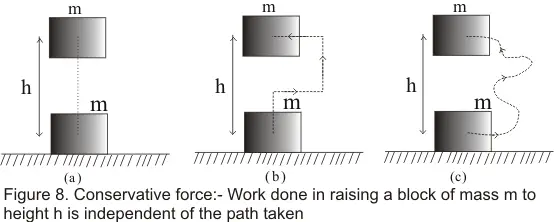
We then replaced the work done by the conservative forces by the change in the potential energy of the particle, combining it with the change in the particle’s kinetic energy to get Equation 8.2. Returning to our development of Equation 8.2, recall that we first separated all the forces acting on a particle into conservative and non-conservative types, and wrote the work done by each type of force as a separate term in the work-energy theorem. We first consider a system with a single particle or object. Thus, there is no physical law of conservation of water. A conserved quantity, in the scientific sense, can be transformed, but not strictly created or destroyed. However, in scientific usage, a conserved quantity for a system stays constant, changes by a definite amount that is transferred to other systems, and/or is converted into other forms of that quantity. Bring these atoms together to form a molecule and you create water dissociate the atoms in such a molecule and you destroy water. Water is composed of molecules consisting of two atoms of hydrogen and one of oxygen. (The same comment is also true about the scientific and everyday uses of the word ‘work.’) In everyday usage, you could conserve water by not using it, or by using less of it, or by re-using it. The terms ‘conserved quantity’ and ‘conservation law’ have specific, scientific meanings in physics, which are different from the everyday meanings associated with the use of these words. The last section of this chapter provides a preview. As you continue to examine other topics in physics, in later chapters of this book, you will see how this conservation law is generalized to encompass other types of energy and energy transfers. This will lead us to a discussion of the important principle of the conservation of mechanical energy. In this section, we elaborate and extend the result we derived in Potential Energy of a System, where we re-wrote the work-energy theorem in terms of the change in the kinetic and potential energies of a particle.

Want to cite, share, or modify this book? This book uses the

Releasing it from the same positions on the ruler as you did with the glass marble, is the velocity of this steel marble the same as the velocity of the marble at the bottom of the ruler? Is the distance the cup moves proportional to the mass of the steel and glass marbles? It is interesting to do the above experiment also with a steel marble (or ball bearing). You will need the mass of the marble as well to calculate its initial kinetic energy. As noted in Kinetic Energy and the Work-Energy Theorem, the work-energy theorem states that the net work on a system equals the change in its kinetic energy, or W net = ΔKE W net = ΔKE size 12. We will see that the work done by nonconservative forces equals the change in the mechanical energy of a system. Now let us consider what form the work-energy theorem takes when both conservative and nonconservative forces act. When the same rock is dropped onto the ground, it is stopped by nonconservative forces that dissipate its mechanical energy as thermal energy, sound, and surface distortion. (b) A system with nonconservative forces. The spring can propel the rock back to its original height, where it once again has only potential energy due to gravity. When a rock is dropped onto a spring, its mechanical energy remains constant (neglecting air resistance) because the force in the spring is conservative. (a) A system with only conservative forces. Figure 7.15 Comparison of the effects of conservative and nonconservative forces on the mechanical energy of a system.


 0 kommentar(er)
0 kommentar(er)
